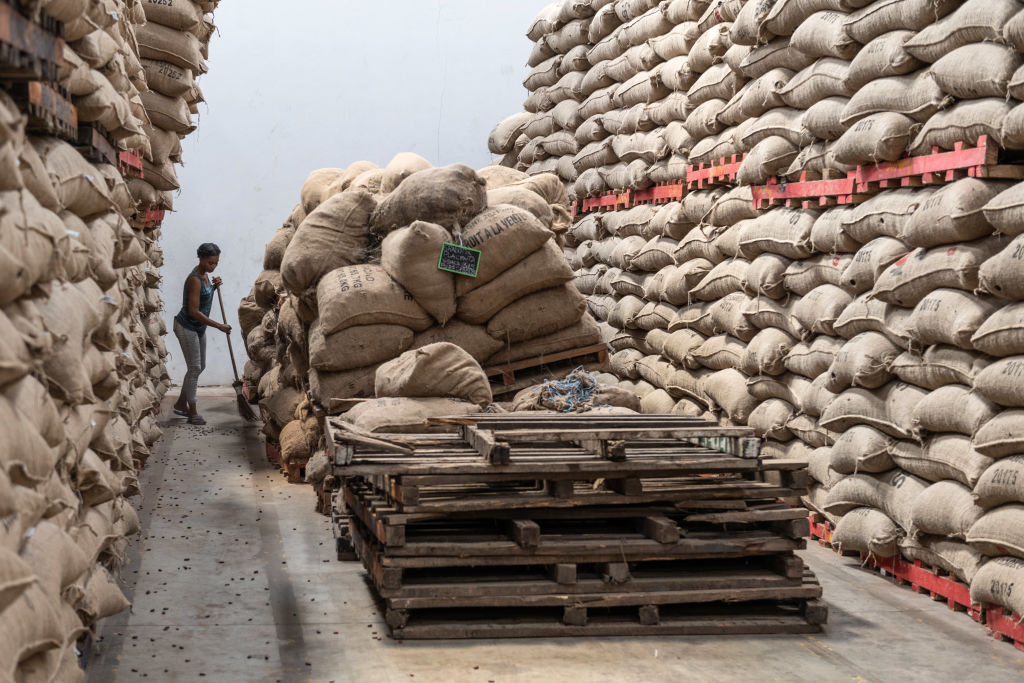
You can blame Russia for a lot of things: election interference, ransomware attacks, even the death of up to 50,000 dolphins. Now, there’s one more thing to add to the list: the price of cocoa is soaring, and it’s kind of Putin’s fault.
The runaway inflation of 2021 and 2022 appears to be slowing in the U.S.; prices were up 3.8% in May from a year ago, the Bureau of Economic Analysis said on Friday, June 30, after rising more than 4% every previous month of 2023. But chocolate comes from cocoa, and the price of cocoa reached a 46-year high on the International Exchange in London on June 30 as traders anticipate more demand than supply in coming months. The price of cocoa, which is traded on the London and New York commodities markets, is up about 40% from October.
“The only market now nearing all-time highs right now is cocoa,” says Shawn Hackett, a commodities trader and president of Hackett Financial Advisors, which trades agriculture commodities. “Prices started to rise last September and have been on a steady uptrend.”
What’s going on? When Russia invaded Ukraine in February 2022, the price of oil, coal, and gas spiked as traders bet that there would not be enough energy to power Europe without Russian supplies. Analysts predicted shortages, spiraling energy prices, and work stoppages over the winter of 2022-2023. As a result, European chocolate manufacturers placed fewer orders for cocoa, anticipating that they wouldn’t even be able to run their factories, says Hackett. (Europe is one the world’s biggest cocoa importers.)
More from TIME
But Europe transitioned relatively easily away from Russia’s fuel, as it found alternative energy sources and as it weathered a relatively warm winter. By the time fuel prices started dropping in August of 2022, and chocolate companies realized that they could keep running their factories, they were all competing for a limited supply of cocoa. “Everyone suddenly realized that the economy would be fine, and that they didn’t have enough cocoa beans,” Hackett says.
Cocoa is also a fertilizer-intensive crop, so high fertilizer prices after the invasion of Ukraine contributed to 2022’s crop being lower than usual, says Jonathan Haines, a senior analyst at Gro Intelligence, a platform that uses AI to forecast climate and agricultural conditions.
Russia’s invasion of Ukraine may have started the cocoa price climb, but now, weather patterns are sending it higher. Around 75% of all cocoa is produced by just four countries in West Africa: the Ivory Coast (which produces about half of the world’s supply), Ghana, Cameroon, and Nigeria. The cocoa crop was already depressed because of the fertilizer problems and a drought last year, Haines says, and now weather forecasters say a major El Nino weather pattern is developing, which hasn’t happened since 2015. While El Nino makes some areas wetter, it causes drier conditions in West Africa, depressing cocoa production. West Africa is in the worst drought the region has experienced since at least 2003, according to Gro Intelligence’s drought index.
The price of cocoa has an effect on the price of the chocolates you buy at the grocery store; even in normal times, cocoa is one of the highest-cost ingredients. And with the inflation of the last two years, chocolate makers have not been shy about raising prices to cover their costs. It’s something Hershey’s has already acknowledged; in its most recent earnings call, in April, chief financial officer Steven Voskuil said that “cocoa and sugar in particular are moving in the wrong direction,” referring to commodities prices. In early 2022, even before the invasion of Ukraine, Hershey’s raised prices for its product lines. At the time, it blamed inflation. On its April earnings call, Hershey, said that it was benefiting from the price increases it had already made, and that it expected to see prices normalize by the end of the year. But that was before the cocoa inflation went cuckoo-for-cocoa puffs.
More Must-Reads from TIME
- How Donald Trump Won
- The Best Inventions of 2024
- Why Sleep Is the Key to Living Longer
- Robert Zemeckis Just Wants to Move You
- How to Break 8 Toxic Communication Habits
- Nicola Coughlan Bet on Herself—And Won
- Why Vinegar Is So Good for You
- Meet TIME's Newest Class of Next Generation Leaders
Contact us at letters@time.com